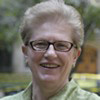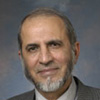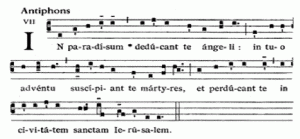 David Arnow
Jewish
David Arnow
Jewish
Jerusalem’s spiritual importance to Jews and Judaism would be hard to exaggerate. The Bible mentions Jerusalem or Zion, a rough synonym, more than 800 times, while the traditional daily liturgy includes more than 50 such references with Grace after Meals adding 13 more. When Jews pray, we face Jerusalem. Jerusalem’s significance lies not just in the fact that it was ancient Israel’s capital city — and is so again — but because it was the location of the First and Second Temples. From the reign of Solomon, in the 10th century B.C.E., to the destruction of the Second Temple in 70 C.E., these temples stood for almost a thousand years. The Temple was the heart of the Israelite religion, a place of pilgrimage on festivals and the site of sacrificial rites. It may be hard for us to understand today, but throughout the ancient world sacrificial rites provided the primary sense of connection between a people and its gods. In fact, the Hebrew word for “sacrifice” is related to a word that means “to draw close.”
Judaism as we know it today evolved in the wake of the Temple’s destruction. In order to survive, Judaism became portable. Sacred moments in time would substitute for the loss of sacred space. Part of Judaism’s evolution in the post-Temple era involved ritualizing the traumatic sense of loss. Thus four of Judaism’s six traditional fast days commemorate different phases of the Temple’s destruction. When plastering a house some still practice the custom of leaving a portion unplastered as a remembrance of the Temple.[127. Tosefta, Baba Batra 2:17 (second or third century).] At every Jewish wedding, breaking a glass evokes the destruction of the Temple.
At the same time, restoration of Jerusalem and the Temple came to express Judaism’s deepest messianic hopes. The last of the seven nuptial blessings declares, “Soon may there be heard in the cities of Judah and in the streets of Jerusalem, the voice of joy and gladness . . .” And we find similar allusions in the Haggadah. Note the refrain of a beloved Seder song, Adir Hu, which began appearing in Haggadot in the 14th century: “May He build His Temple very soon. O God, build Your Temple speedily.” One of the Seder’s most vivid evocations of the Temple appears in a passage attributed to Rabbi Akiva (first and second centuries C.E.) found in the blessing over the second cup of wine:
. . . So Lord our God and God of our ancestors, enable us to reach also the forthcoming holidays and festivals in peace, rejoicing in the rebuilding of Zion Your city, and joyful at Your service [i.e., the sacrificial service]. There we shall eat of the offerings and Passover sacrifices whose blood will reach to the walls of Your altar for acceptance.
The Haggadah celebrates God’s past redemption of the Israelites from Egypt to sustain hope in God’s ultimate restoration of the Jewish people to a Jerusalem rebuilt, to a city that lives in peace.
 Mary C. Boys
Christian
Mary C. Boys
Christian
Above all in Christian memory, Jerusalem is irrevocably linked to Jesus. Although he was from the Galilee and much of his ministry took place in that region, the centripetal role his disciples gave to his passion, death and resurrection—events that took place in Jerusalem—meant that the city figured prominently for them. Then, too, it was in an “upper room” in Jerusalem that the church began (Acts 1:12-14), and in Jerusalem that the first martyr, Stephen, was killed (Acts 7:54-60).
The followers of Jesus went out from Jerusalem into the Mediterranean world and beyond preaching the Gospel. Yet when early Christians elected to retain the Scriptures of the Jews as theirs as well—the “Old Testament”—they shared with Jews the memory of precious sites of biblical geography, especially Jerusalem. Eventually, the holy places Christians venerated became part of a sacred landscape, what they came to call the “holy land.” [79. See Robert L. Wilken, The Land Called Holy: Palestine in Christian History and Thought (New Haven and London: Yale University Press, 1992).]
Jerusalem is not simply a sacred space in the Christian imagination, but also a symbol of the meeting place between God and God’s people. A poignant illustration is the chant traditionally sung at funerals in the Roman Catholic tradition at the final farewell to the body:
May the Angels lead you into paradise:
may the Martyrs come to welcome you,
and take you to the holy city, Jerusalem
May choirs of Angels welcome you,
and with Lazarus who is poor no longer
may you have eternal rest.
 Muhammad Shafiq
Muslim
Muhammad Shafiq
Muslim
- Jerusalem was the original place (Qibla) toward which Muslims turned for their five-times-daily prayer. Some years later Muhammad (peace be upon him) was told to change the Qibla from Jerusalem to Makkah (2:142-144).
- Jerusalem is the home of our Qur’anic and Muslim prophets (peace be upon them). Muslims respect the Biblical prophets including Abraham, Isaac, Ishmael, Jacob, Jesus, Moses, David and Solomon, from whom we learned the Oneness of God.
- Jerusalem is al Quds (noble, sacred) and Al Quddus is one of the attributes of God in Islam. It is an al-ard al-Muqaddasah (the Sacred Land, 5:21) and its surroundings are called Barakna Hawlaha (God blessed its precincts, 17:1).
- Jerusalem is the site of Isra (Muhammad’s night journey from Makkah to Jerusalem) and Mi`raj (Muhammad’s ascension to heaven). The importance of these two events for Muslims is reflected in their reverence for the two sacred places.
- Jerusalem is the third holiest city in Islam after the city of Makkah, Madina.
- Jerusalem is the site of Isra (Muhammad’s night journey from Makkah to Jerusalem) and Mi`raj (Muhammad’s ascension to heaven). The importance of these two events for Muslims is reflected in their reverence for the two sacred places.
- Muslims believe that Jerusalem is the only place on earth where God brought together all prophets during Muhammad’s ascension to heaven and they prayed together and Muhammad was asked to lead them in prayers.
- Al Aqsa in Jerusalem and the Ka`ba in Makkah are the only two mosques mentioned by name in the Qur’an.
- Some great companions of prophet Muhammad are buried in Jerusalem
- Most significant is the Dome of the Rock in Jerusalem, a great monument of Muslim architecture.
Note: Translation of the Qur’anic verses and many of the Hadith translation with references were taken from Islamicity.com; some translations of and references to the Hadith were taken from ahadith.co.uk.

